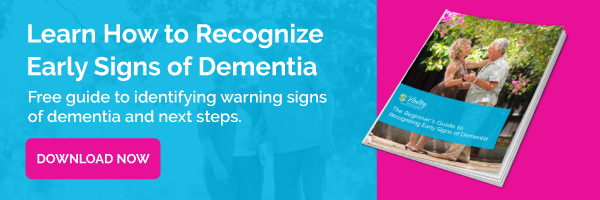When a loved one is diagnosed with Alzheimer’s disease or another type of dementia, most families assume the best place to care for them is at home. It’s the most comfortable and familiar environment, right? However, you may be surprised to find that the specialized care and supportive environment in senior living memory care communities offer ways for your loved one to thrive that are not as easily achieved at home. Here’s how memory care can help your loved one with dementia.

What is Memory Care?
Memory care is a type of senior living that is designed just for those with Alzheimer’s disease and dementia. These communities nurture and support residents with specially-trained staff, 24/7 supervised care, and an environment that’s secure, yet comfortable with features that typically include:
- A private or companion apartment
- Chef-prepared meals
- Medication assistance
- Personalized support with bathing, dressing, eating, and other daily tasks
- Planned social, fitness, and recreational activities
- Housekeeping and laundry services
Benefits of Memory Care
We believe an engagement-focused philosophy of care and support offers the most benefit for residents in memory care. As such, our Vital Brain Program is founded on the belief that everyone has an innate ability to learn and succeed no matter the degree of cognitive impairment. By focusing on what your loved one can or wants to do (instead of the skills they may have lost), they can still live their best life regardless of their level of cognitive impairment.
Specific benefits in our memory care communities include:
- Tailored care – We know dementia affects each person differently, so the services and support your loved one receives are tailored to their specific needs and abilities including fitness goals and nutrition.
- Specialized training – Our staff participates in ongoing training that’s specialized to include a deeper understanding of dementia and how to care for the specific needs of those with memory loss. Our staff also specializes in techniques for managing challenging behaviors and effective communication strategies.
- Daily opportunities to build cognitive strength – Each day your loved one will have numerous ways to engage their brain through cognitive health programs and creative outlets such as art and music.
- Daily opportunities to connect with others – We offer social activities and amenities that encourage connection with others, in addition to opportunities to learn and experience new things in small group settings.
- Stress reduction – Spending time in nature with walking paths, conservation space, and a meditation pond can offer a sense of calm, comfort, and relaxation. In addition, residents enjoy our Mindful Meditation classes.
- Dining that promotes independence – Not only will your loved one benefit from chef-prepared meals that are as delicious as they are nutritious, but our dining experience also promotes independence with finger foods and dishes that are easy to chew in an environment that’s comfortable and relaxed. However, dining assistance is also available when needed.
- Supportive design – Our memory care communities feature a neighborhood concept that’s specifically designed for independence, engagement and success with calming lighting and colors chosen as well as plenty of access to fresh air and sunshine.
Check out The Beginner’s Guide to Recognizing Early Signs of Dementia to learn more. Or, contact your nearest Vitality Living community today to schedule your virtual tour!



